Analysing Sérgio Conceição’s Porto
When Sérgio Conceição took charge of FC Porto in the summer of 2017, Porto had just lost the last four league titles to Benfica. He put a stop to that in his first season, restoring Porto’s dominance and ending a five-year trophy drought. Since then, he has added two more Primeira Liga championships, one Taça da Liga and three Taça de Portugal titles to his résumé, and he has masterminded Champions League knockout round wins against Roma and Juventus.
His Porto side were unable to find a way past Arsenal, with the Gunners prevailing on penalties and booking their ticket in the Champions League quarterfinals, and they find themselves third in the table, six points behind Benfica and seven behind Sporting, who have a game in hand. They do have one last hope of silverware, with Porto set to take on Vitória in the Taça de Portugal semifinals across two legs, but it is growing increasingly likely that Conceição will leave this summer following the expiry of his contract.
The 30-time Portuguese champions have often lined up in a 4-4-2 on paper with Mehdi Taremi – who will be joining Inter Milan next season on a free deal – and Brazilian sensation Evanilson up top. However, since Taremi’s departure to the Asian Cup, Conceição has opted for a 4-2-3-1 with his son Francisco playing on the right flank, alongside Pepê, Wenderson Galeno and Evanilson in attack.

In the first phase of possession, Porto work with a 2-2 build-up structure, meaning that the two centre-backs and two midfielders together in some sort of a box-like shape whilst the fullbacks are positioned slightly higher.
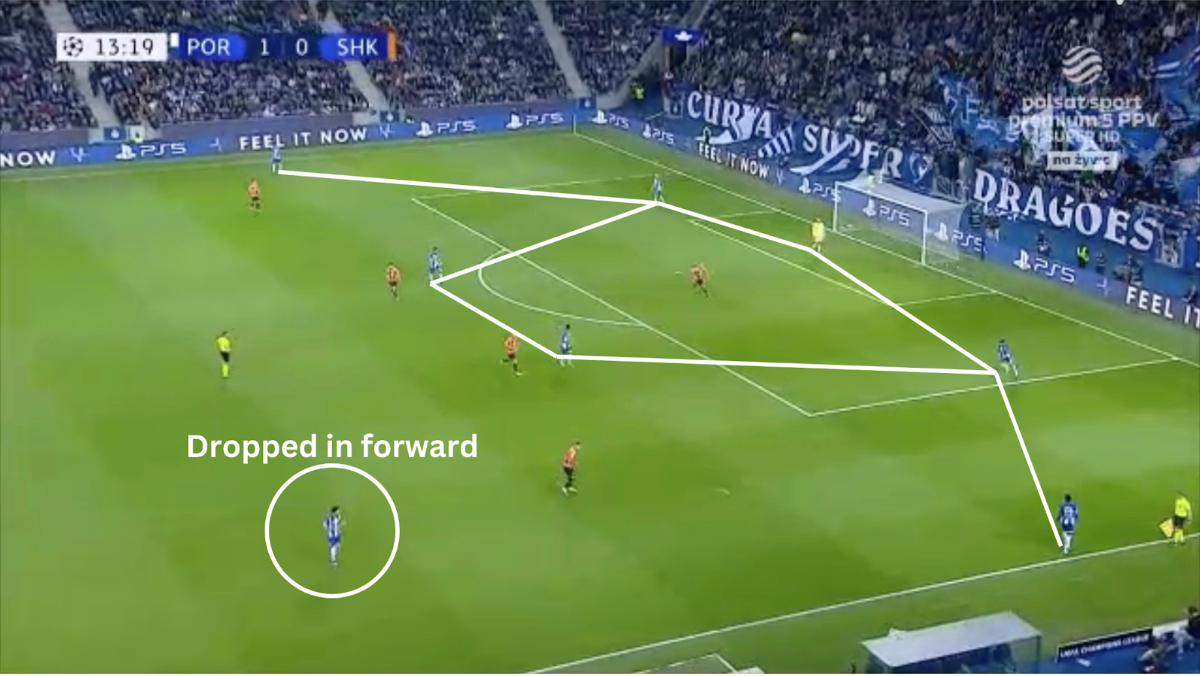
Conceição’s approach is very possession-heavy as he likes his team to recycle the ball in defence before giving it to one of his midfielders or one of the centre-backs dribbling the ball into midfield. And while this is true in most of his games, especially in the Liga Portugal, he doesn’t mind having less of the ball, stating, “We had 40%-60% possession of the ball, which is not a scandal. I didn’t mind having 30%-70% and winning too. It all depends on what you do with the ball within the strategy defined to score goals.”
But to continue upon his principle of recycling possession, it’s one of the reasons you can see a forward sitting very deep, the ball can go through the forward into the attack. As Porto progress possession, their players don’t necessarily have ‘positions’, at least not in the way you might be used to seeing.
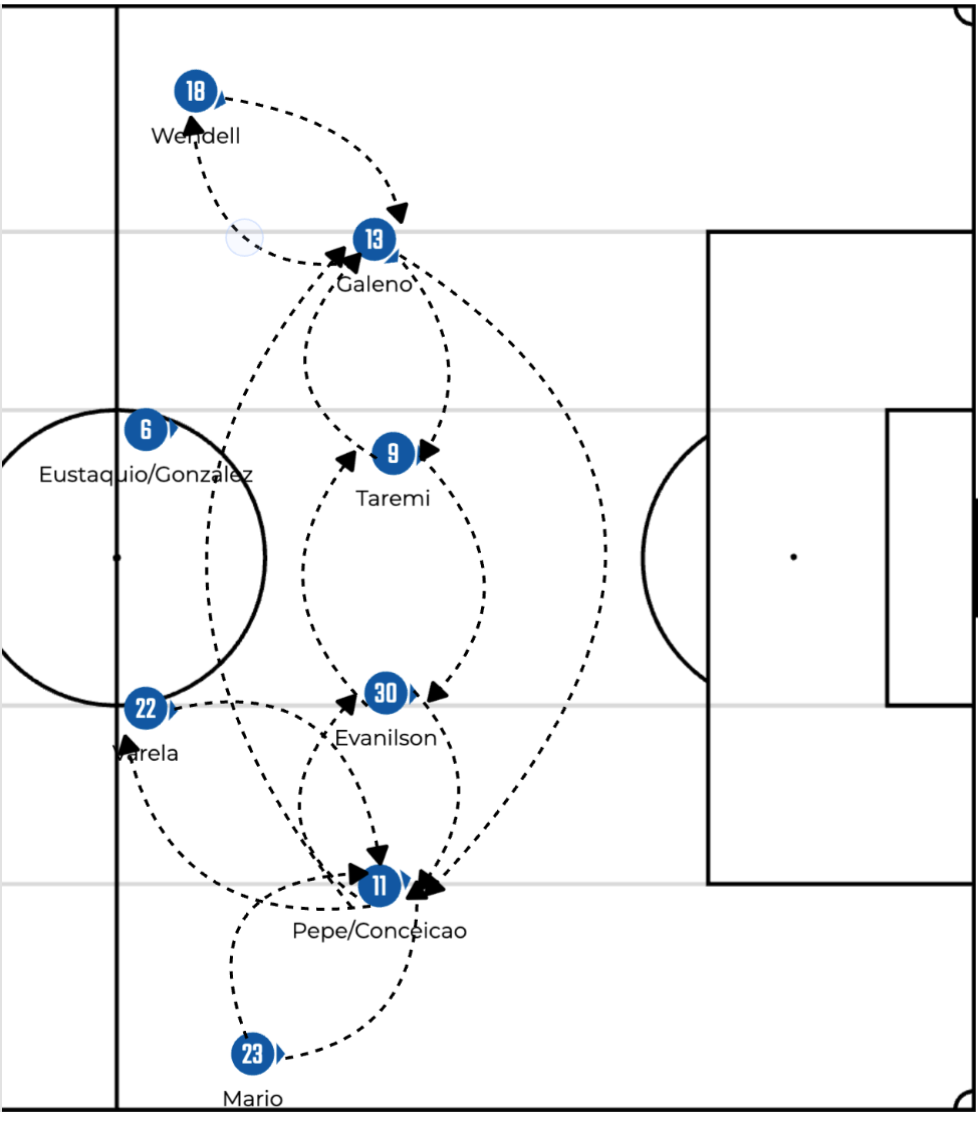
The forwards are constantly rotating with the wingers and fullbacks often swapping positions in the Dragões’ 2-4-4 shape. These fullbacks — typically Wendell and João Mário — will position themselves on the same line as the midfielders, looking to combine and create opportunities for the four attacking players.
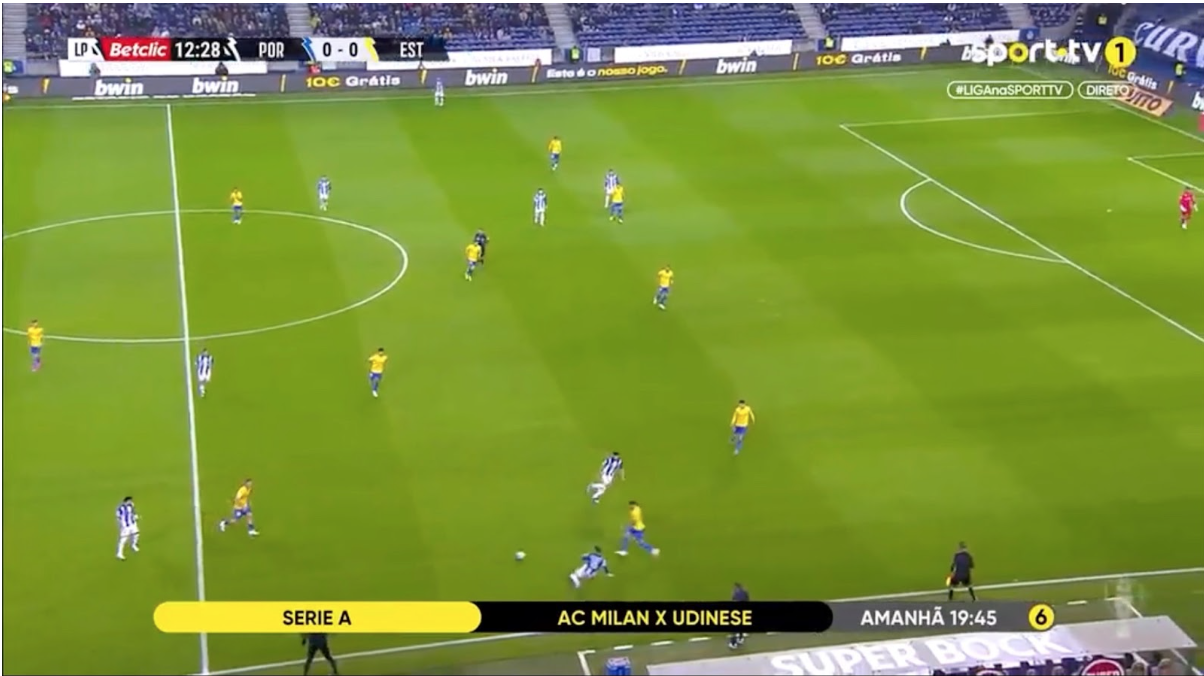
In this shape, the wingers will often come towards the inside, and interchangeably one of either Mehdi Taremi and Evanilson will drop deeper to receive the ball or take defender with him to create space for the other. But it’s also in this phase where the fullbacks become crucial, as they often are at the base of Porto’s wide attacks. The fullbacks will combine with however it may be on the flank at that moment to set up quick 1-2s and triangles to help progress the attack. Here, the two players out wide and Evanilson in some way combine to set this attack up, one of the many occasions where an attacking rotation is utilised.
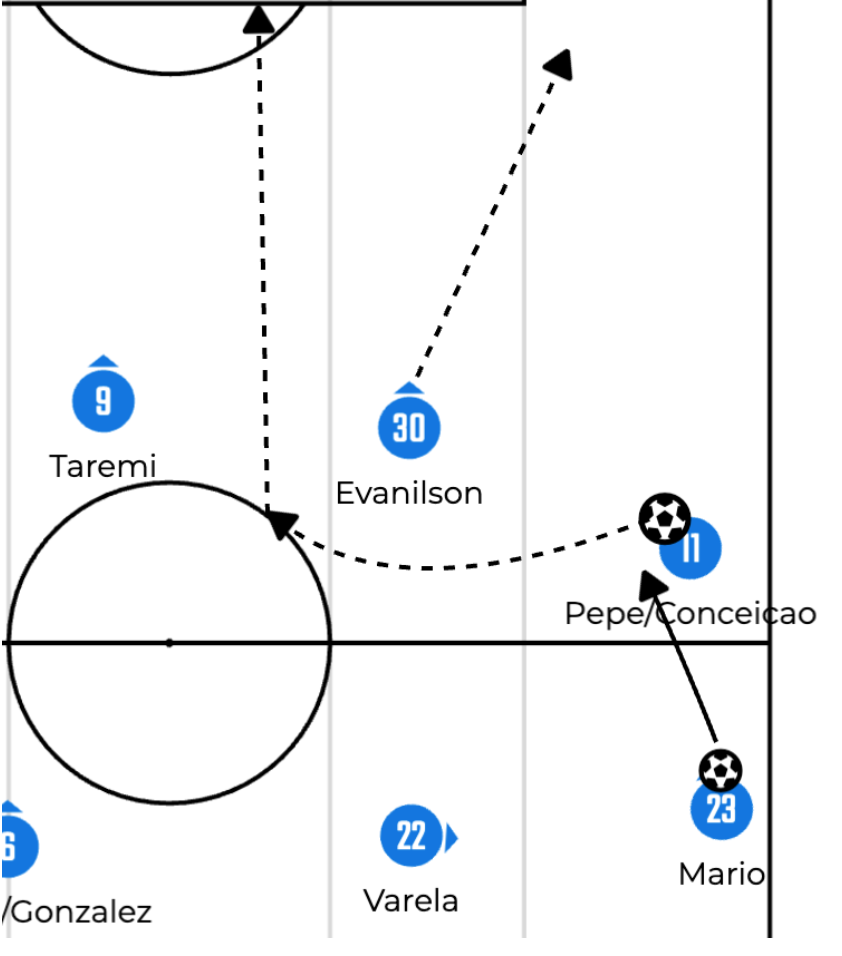
This is exactly is what Conceição wants, as it’s exactly these rotations that make his side unpredictable and thus tough to defend. How do you prepare your defenders for a striker that at some point might be closer to his own box than to yours? But coming back to the shape quickly, you will notice that – most often – one of their wingers will be sitting very wide while the three remaining forwards will sit closer to each other.
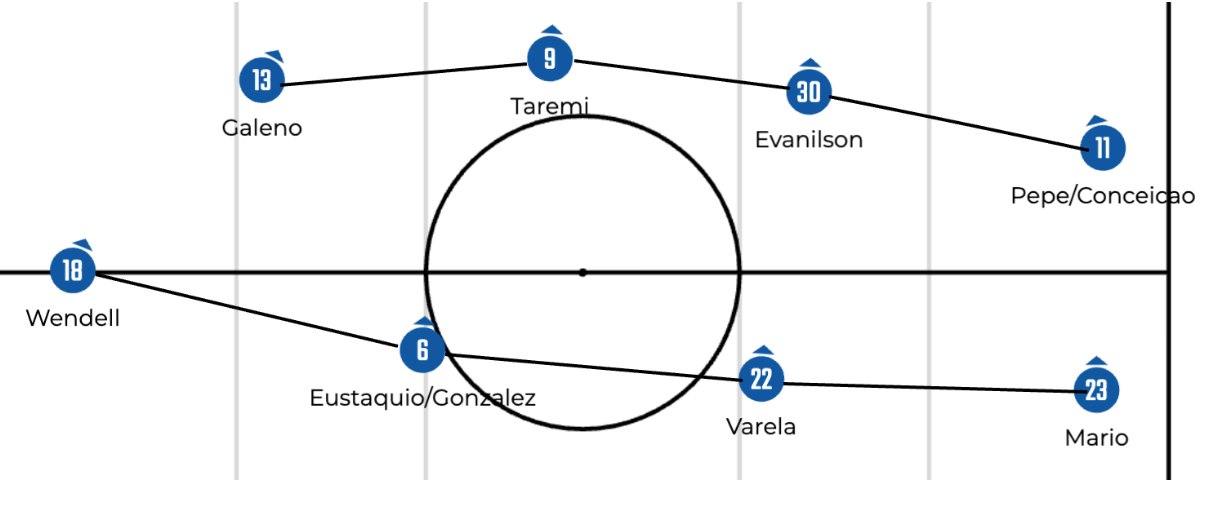
This is something that fits Francisco Conceição especially – due to his creative nature, he can attack a fullback one-on-one while the other defenders are busy with the other three remaining forwards plus a fullback on either side. Defensively, Porto like to apply heavy pressure on the ball and from the front. You’ll often notice them pressing with three players forward, then their two midfielders and one tucked-in winger really focusing on applying pressure on the ball. This results in some sort of 4-2-1-3.
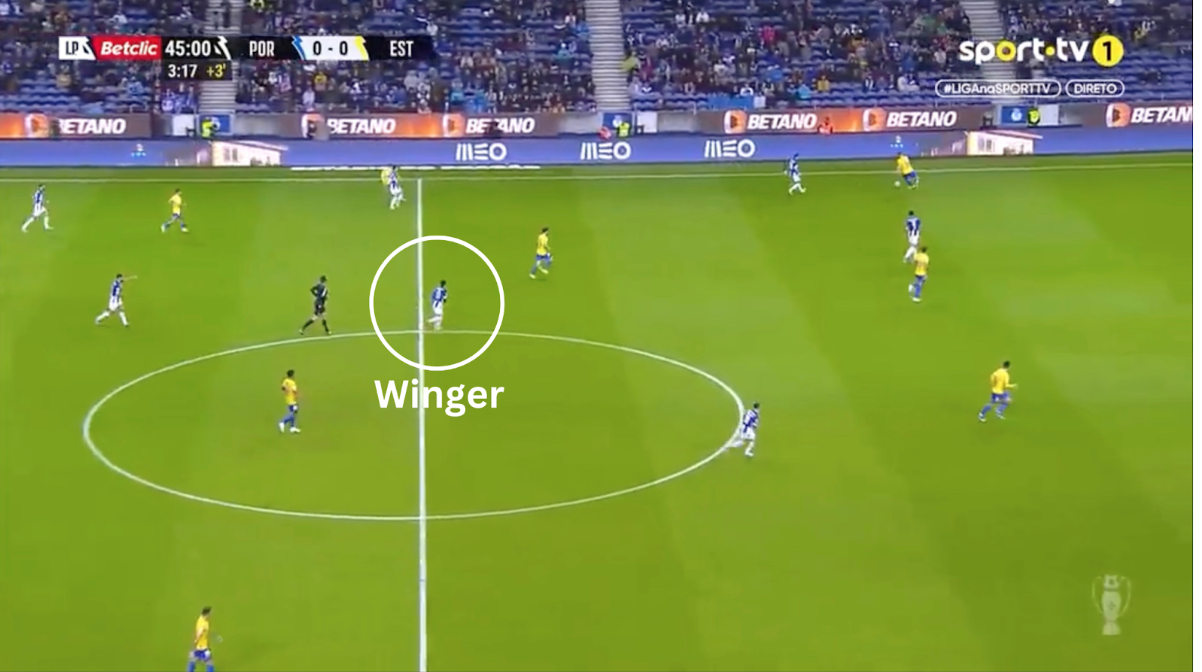
As you can see in the image above, one of the wingers is quite high while the other is in midfield. This means the fullbacks will often press up when defending a winger, which forces a midfielder to drop slightly deeper as long as the winger hasn’t returned to aid the fullback at least.
Due to their heavy pressing, Porto play with a very high line, an approach that allows them to quickly and easily transition into their attacking setup and progress the ball into the final third. While Porto’s approach is possession-heavy, their quick passing in the middle and attacking third allows for dangerous transitions and an unpredictable attacking side.
It has been a glorious seven-year spell for Sérgio Conceição at the Estádio do Dragão — only Jorge Jesus (12) has racked up more trophies in Portuguese football — and whilst it remains to be seen whether or not he’ll prolong his tenure with the Dragons, one thing’s for sure: he has left an indelible legacy at Futebol Clube do Porto.
By: Teo Slehofer / @TeoSlehofer
Featured Image: @GabFoligno / Getty Images
